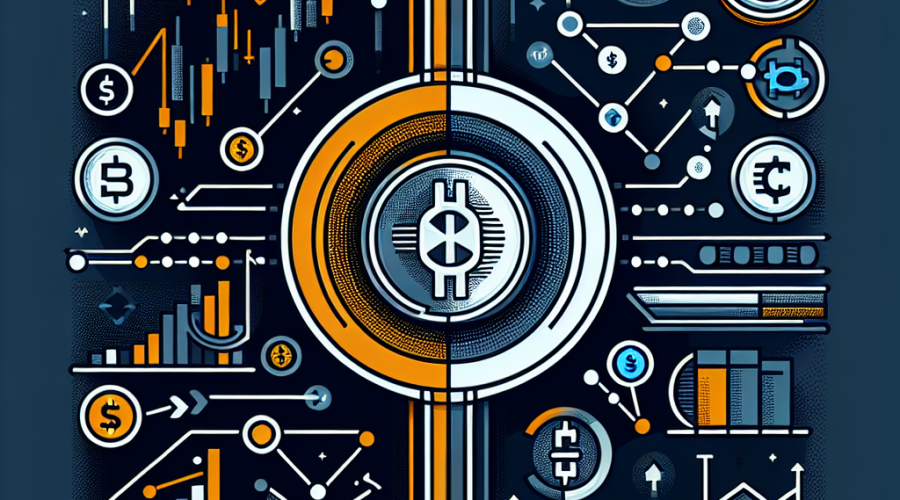Coinbase’s x402 Protocol Sparks Payment Revolution with AI and Stablecoins
Introduction: A New Chapter for Digital Payments
The payments landscape is on the cusp of a seismic transformation thanks to Coinbase’s innovative x402 protocol. In merely one week during October, x402 processed close to 500,000 transactions, a number that underscores a staggering 10,780% increase compared to the preceding month. This explosive growth isn’t just about transaction volume—it signals the dawn of seamless, programmable payments between artificial intelligence (AI) agents, humans, and digital services, without the cumbersome need for traditional financial middlemen.
The x402 protocol ingeniously revives the long-unused HTTP 402 “Payment Required” status code, repurposing it for instant and secure stablecoin payments over the internet. This experiment, started by Coinbase and supported by key industry figures, has the potential to redefine how value moves online and how machines transact autonomously.
Understanding x402: The Digital Payment Layer the Web Was Missing
The history of HTTP status codes is filled with cryptic numbers that define the way we surf the web. Among them, HTTP 402 remained a largely forgotten relic—originally reserved as a “Payment Required” prompt, but left unimplemented across mainstream internet use. Coinbase’s x402 protocol dusts off this code and brings it to prominence in the world of programmable payments.
Here’s how x402 works: When a user, API, or AI agent requests a digital service or data, the server can respond with the 402 code, prompting the initiator to make a payment. Using stablecoins—cryptocurrencies whose value is pegged to fiat currencies like the US dollar—the sender issues a digitally signed transaction directly to the recipient. An on-chain verification confirms the payment, and instant access to the requested resource is granted. The process is automated, borderless, and eliminates delays or costs associated with credit cards or payment gateways.
At its core, x402 has transformed payments into a native, programmable layer of the internet, opening up new possibilities for pay-per-use APIs, data access, algorithmic services, and much more.
Unprecedented Growth: Transaction Volumes and Record-Breaking Activity
The impact of x402 on the payments ecosystem is underscored by its recent explosion in transaction activity. From October 14 to October 20, the protocol saw nearly half a million transactions—reaching a daily peak of 239,505 individual transfers on Friday. Volume followed suit, with a record $332,000 processed through x402 in a single day.
This surge in demand has caught the attention of Coinbase’s leadership. CEO Brian Armstrong described the protocol as “growing like crazy” and acknowledged its potential to reshape digital commerce. The market is taking note, as evidenced by the swelling market value of x402-related tokens: the ecosystem reached a $180 million capitalization in just 24 hours, representing a meteoric 266% gain.
This activity is not simply statistical noise. The sharp uptick highlights widespread adoption by developers, traders, and, crucially, by new automated agents that are emerging as the next big users of blockchain technology.
The Role of AI Agents: Automated Commerce at Scale
What truly distinguishes x402 from prior payment solutions is its focus on empowering AI agents. Venture capital experts at a16z Crypto forecast that autonomous AI-powered systems could be responsible for as much as $30 trillion in transaction volume by the year 2030. This eye-opening prediction, featured in the firm’s State of Crypto report, is rooted in the unique needs and capabilities of machine-driven commerce.
Developers Kevin Leffew and Lincoln Murr, who are behind core elements of x402, point out that AI agents require certain monetary primitives to function independently: atomic payments for real-time transactions, programmable policies to manage risk and compliance, and composable wallets that machines themselves can use.
By leveraging stablecoins on the Ethereum blockchain, x402 delivers atomic, secure transfers that are programmable and final. This design empowers AI systems to pay for digital resources—such as API calls, compute time, or storage—without oversight. For a glimpse into the possibilities, imagine self-driving vehicles paying tolls as they navigate highways, or AI-powered apps automatically storing and retrieving data based on real-world need.
Already, trading bots and portfolio management tools use autonomous crypto payments. With x402, these capabilities are expanded far beyond financial markets, giving rise to general-purpose, agentic commerce across the internet.
Token Ecosystem and the Rise of x402-Based Projects
The success of the x402 payment protocol has sparked a wave of innovation among blockchain developers and entrepreneurs. Using x402 as a technical and economic foundation, dozens of new tokens and applications have sprung up in the past month. Major data aggregators like CoinGecko have responded by launching a dedicated “x402 tokens” category, tracking the explosive growth and trading volumes of these assets.
Notably, the token PING has become central to testing and real-world usage, attracting over 31,000 new buyers and reaching $3.5 million in daily trading volume. This appetite for x402-powered tokens underscores that the marketplace is hungry for new programmable money and micropayment tools.
While some industry observers question the sustainability and authenticity of this transaction surge—citing the possibility of artificial inflation by trading bots or marketing stunts—others see it as a pivotal moment for blockchain and AI. Suede Labs, a prominent voice in fintech, hailed the innovation: “The enthusiasm behind x402 says everything about where payments and the web economy are headed.”
Major Exchange Adoption and Institutional Support
The integration of x402 is not limited to experimental projects. Binance, the world’s largest cryptocurrency exchange, recently enabled native support for x402 tokens within its ecosystem. This integration allows Binance’s global user base to trade, purchase, and store x402-enabled assets with minimal friction.
Exchange support is significant because it assures liquidity, trust, and user-friendly interfaces for those who might otherwise hesitate to experiment with bleeding-edge protocols. As a result, x402 is moving from a niche developer experiment to a payment method with broad accessibility.
Coinbase itself continues to innovate on the foundation set by x402. The company’s new “Payments MCP” system, announced this month, uses large language models (LLMs) like Claude and Gemini to streamline wallet creation, fiat onramps, and stablecoin transactions—all through simple natural language commands. This evolution makes creating and managing a crypto wallet as easy as sending an email, paving the way for mainstream adoption.
Stablecoins: The Backbone of Agentic Payments
At the heart of x402 and its growing ecosystem lies the stablecoin. By using assets like USDC (USD Coin), users and AI agents enjoy the benefits of cryptocurrency—global reach, 24/7 transactions, programmable interfaces—without the volatility that plagues traditional tokens like Bitcoin or Ethereum.
Coinbase’s Dan Kim and Erik Reppel, key figures in the protocol’s business and engineering development, have championed stablecoins as “the perfect payment infrastructure for agentic commerce.” Their point is well taken: With zero need for a developer’s API key or complicated onboarding, anyone can create a wallet or complete a transfer with merely an email address and intuitive prompts.
This approach democratizes access to the world of programmable money, reducing barriers for both individuals and autonomous AI agents alike.
Implications for the Future: A New Economic Paradigm
The meteoric rise of Coinbase’s x402 protocol marks more than a technical milestone; it signals a shift in how society will move money, pay for information, and interact with machines in the coming years. As AI systems become increasingly autonomous, the demand for embedded, frictionless payment rails will only accelerate.
x402 offers a glimpse into a world where every digital action, from accessing an article to running a complex data analysis, can be invoked and paid for instantly by human or machine request. Its open, internet-native architecture invites a new wave of innovation across finance, logistics, gaming, and beyond.
While challenges remain—namely, ensuring real usage versus speculative hype and scaling the protocol for global demand—the groundwork laid by Coinbase and its partners may well serve as the backbone of a future economy powered by both humans and AI.

















